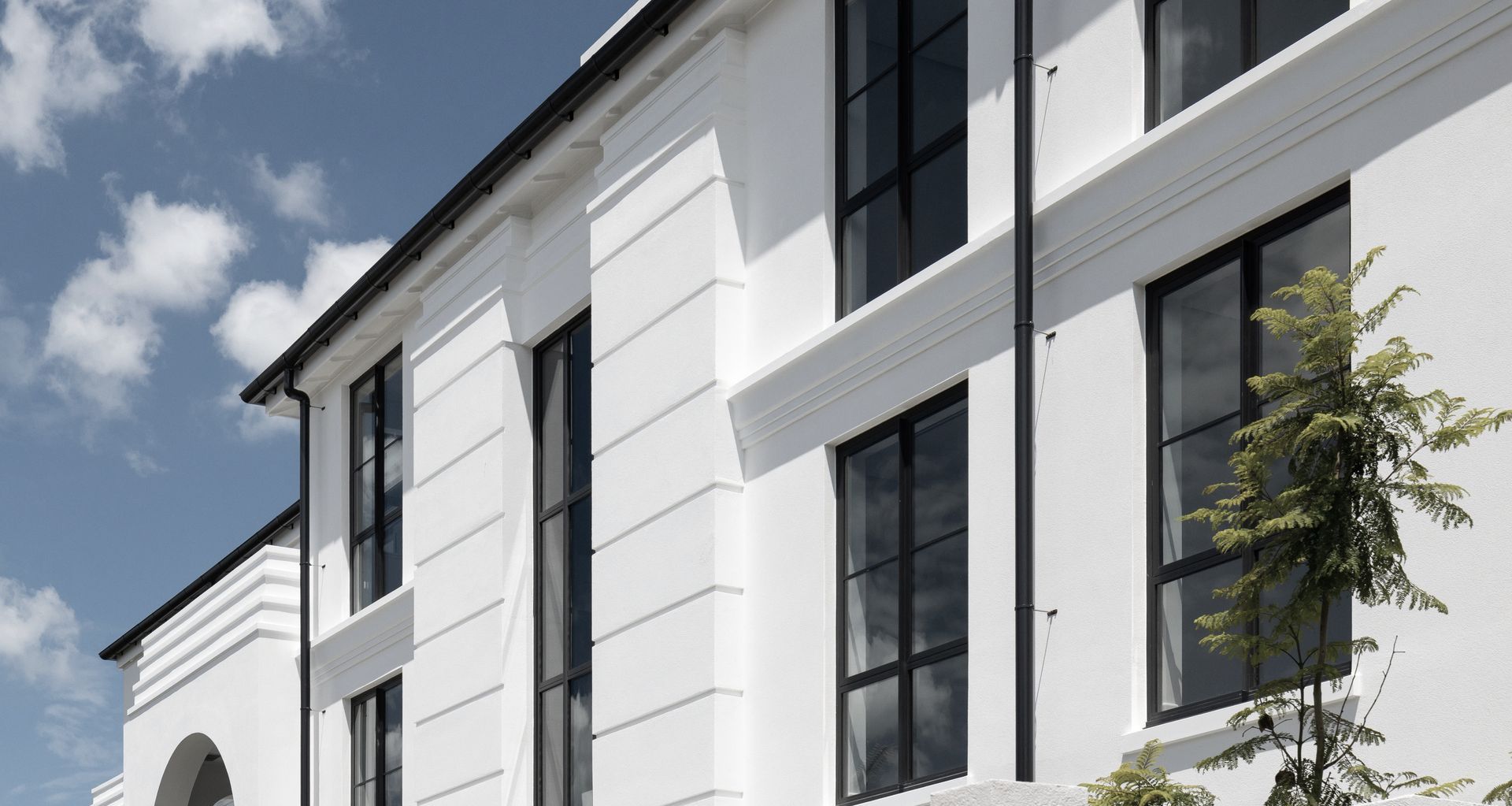The value of custom mouldings in the 21st century
Written by
16 April 2023
•
4 min read

When we think of decorative exterior mouldings on a building, generally the first thing that comes to mind are older, historical buildings that utilise features of classical architecture. Greek Revival, neoclassical, renaissance, baroque – these architectural styles are renowned for their highly stylised usages of dentils, corbels, architraves, cornices, columns and more.
Without these mouldings, buildings within these celebrated schools of architecture would be almost entirely stripped of their exterior character. And while most buildings in the modern era opt for a more pared-down façade aesthetic in favour of a minimalist, hyper-functional approach, like everything in life, there are exceptions to the rule.
And even in modern, minimalist buildings today, there is still value in installing such mouldings, according to Accumen Shapes director Josh Mainwaring – whose company specialises in manufacturing a variety of decorative exterior mouldings to enhance façade finishes.


Adding the final details to façades
“A lot of people assume that we work mainly with heritage buildings, but I’d say about 80-90% of our work is in new builds,” says Mainwaring. “Window trims, and especially cornice detailing, are trending right now. Columns and chimney mouldings are also quite popular right now.”
A lot of Accumen Shapes' work is concentrated on the finer details, though – window and door bands are the company’s bread and butter. And while these aren’t always as extravagant as the more ostentatious quoins and arches that it also offers, Mainwaring says they still bring huge value to exteriors that would otherwise be bare.
“It doesn't matter how big or in-your-face the mouldings are because every one adds up to bring out the character of a building,” he says. “We aim to enhance features that would otherwise go under the radar. A common misconception is that the small things like trimmings and bands don’t make much of a difference – but when it combines at the end of the installation, it makes the building look far more presentable and indicates to an onlooker that a lot of thought has gone into the project.”
Another misconception Mainwaring mentions is a perception that the more ornate mouldings, typically used on historical building renovations, are difficult and expensive to install. Quite the opposite, he says.
“Some people see detailed balustrades or columns and tell me, ‘Well that’s quite intricate, the installers must have spent a lot of time installing that’,” Mainwaring says. “But the fact is that our mouldings can be put on at any stage of the build as long as they’re installed onto weathertight substrates.
“This is mainly because our mouldings are not considered structural, so there’s generally no issue around council compliance. They’re purely a decorative detail.”

Combining modern architecture and classical mouldings
Purely decorative or not, the aesthetic benefits the mouldings deliver are significant – and this was the case with the recently completed Arches apartment building in Mission Bay – a modern, high-profile project for which Accumen Shapes provided several distinct bespoke mouldings.
Designed by Archaus Architects, the inspiration for the project were the Spanish-look apartment complexes common throughout California, which incorporate rounded edges and curves throughout the building. Such a distinct design vernacular called for similarly stylised exterior mouldings – which Mainwaring and his team were on standby to deliver.
“We created several different bespoke cornices,” he says. “Some for bay windows, some for general exterior walls, and some specific to the complex’s courtyard. We also provided the balcony step trims, plant room walls, and architraves for the iconic water table in the middle of the courtyard.”
This kind of project, he says, is a perfect mix of classical and contemporary – the cornices especially bridging the gap and bringing a wow factor to the exterior faćade of the apartment building.
“We’re really happy with how it turned out – the whole place looks amazing.”
Learn more about Accumen Shapes and its products and services.
